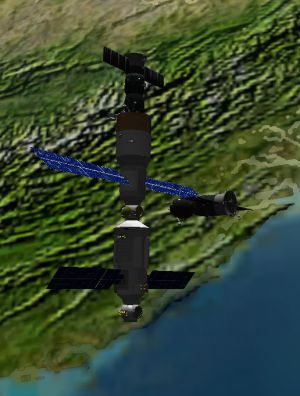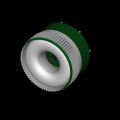Difference between revisions of "Soyuz launchers"
m (Reverted edits by 210.22.158.132 (Talk); changed back to last version by Urwumpe) |
m |
||
| Line 5: | Line 5: | ||
}} | }} | ||
| − | This [[add-on]] includes two versions of the workhorse of the | + | This [[add-on]] includes two versions of the workhorse of the Russian spaceflight history: The '''Soyuz-FG''' and the '''Soyuz-U'''. Both launchers are built around the [[CVEL|CVE-lite]] framework, allowing them to accept complex payload definitions. |
==CVEL Semyorka== | ==CVEL Semyorka== | ||
Revision as of 17:18, 29 November 2007
|
Project home: Soyuz Launchers (CVEL) at orbithangar.com |
This add-on includes two versions of the workhorse of the Russian spaceflight history: The Soyuz-FG and the Soyuz-U. Both launchers are built around the CVE-lite framework, allowing them to accept complex payload definitions.
CVEL Semyorka
The CVEL Soyuz is about to get upgraded soon, turning the addon from the pure soyuz-FG version to the complete family of semyorka based launchers.
Anim8or rendering from above
The original launcher
The soyuz launcher is a 280 ton, two-and-a-half-stage rocket, able to carry about 7 metric tons to LEO. The Soyuz-U is the launcher for both Progress transports and Soyuz TMA space station ferries. It currently launches from Baikonur and Pletesk. A soyuz launch pad is being constructed on Kourou currently to allow a higher GTO performance and european manned missions.
The soyuz launcher is a good example of a proven and evolved launch system. The boosters and the first stage had already been used for launching Sputnik, the worlds first satellite in 1957. Until today the launcher only saw tiny modifications.
Technology
The soyuz is quite different to other launchers, a fact which comes from its long history. The first stage engine system shares many similarities to the A4 rocket, as it uses hydrogen peroxide for driving the turbopumps. The launcher hangs free over its launch pad, hold by four arms right above the boosters. As it was not known in 1963 how to ignite a stage during ballistic flight, the second stage gets ignited hot (while it is still attached to the first stage).
The launcher does not have a roll program, it gets rotated together with its launch pad to the correct launch azimuth.
Glossary
- Blok A - the first stage of the launcher (The stages of russian launchers get their names from the russian alphabet)
- Blok B - One of the booster stages
- Blok G - One of the booster stages
- Blok D - One of the booster stages
- Blok W - One of the booster stages
- Blok I - the second stage of the launcher
- Skirt 3 - The protective cover around the second stage engines, gets jettisoned after ignition.
How to fly
The Soyuz launchers do not come with an autopilot. For launching, just apply full thrust and fly it into orbit. Its recommended to use Surface MFD and Align Plane MFD until second stage operation. Replace Align Plane MFD with Orbit MFD for final orbit insertion. Aim for a 220 x 250 km orbit.





